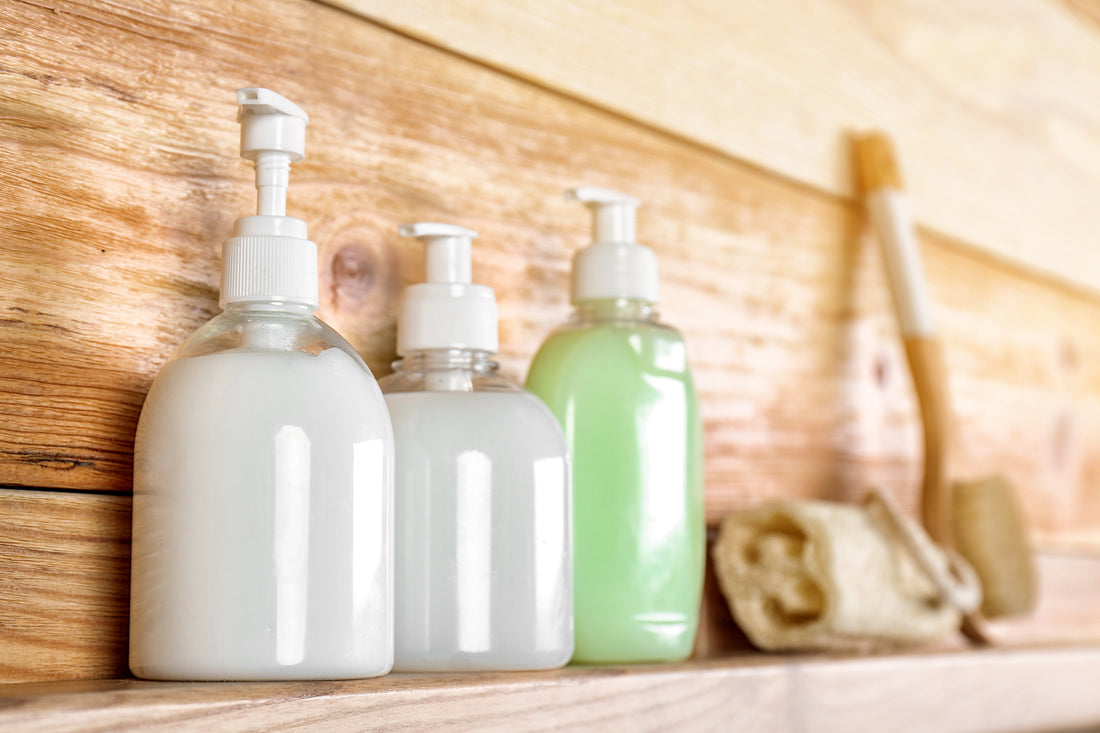
Why Salicylic Acid Belongs In Your Skincare Routine
Salicylic acid is not just a fair-weather friend. For any of the oily-skinned hoomans out there, let me tell you without a shadow of doubt: salicylic acid belongs in your skincare routine, because it’s amazing what salicylic does. It can be a real gift from the gods when your skin is going through a particularly grim breakout - and no, it’s not just for teens! Salicylic acid is more universal than you might think, and we’re going to be talking all about why salicylic acid could suit you. Move over Angela, Pamela, Sandra, and Rita - it’s very likely that you could do with a bit of Sally in your life.
What Is Salicylic Acid?
Salicylic acid is a beta-hydroxy acid, nerdie bit: a compound that encourages the skin to carry out its own exfoliation process. BHA, salicylic acid, is often mentioned in the same breath as AHAs - for example, glycolic acid. The difference between them lies in the penetration and effect which these acids have on the skin. AHAs are water-soluble, so are more suited towards skin that isn’t very oily and can do things like brighten and improve skin texture, while improving skin hydration.
BHA - i.e. our pal salicylic acid - is lipid (or oil) soluble, which means that it can cut through the sebum, or oil, which your skin naturally produces - or, problematically, may overproduce. Salicylic acid can penetrate through the stratum corneum (the outer layer of your skin), which is the section that locks moisture in and keeps irritants out. Salicylic acid works to exfoliate your skin, by penetrating into your pores and clearing them of blockages, whether these occur in the form of excess oil, dead skin cells, makeup residue or pollution.
Both AHAs and BHA are chemical exfoliants, and work to prompt skin to slough off the dead cells. Salicylic acid in particular is useful when it comes to improving the skin of those among us prone to acne, congestion, or simply an abundance of sebum.

How Does Salicylic Acid Work?
Salicylic acid works by penetrating your pores and dissolving the waste matter which might otherwise block them and lead to whiteheads, blackheads, bumps and baddies of all kinds. It also works as an anti-inflammatory, to bring down redness and irritation, and can dissuade further breakouts from trying their luck and making a break(out) for it.
Why Salicylic Acid Belongs In Your Skincare Routine
What a great question. If you’re oil-prone, acne-prone, or congestion prone, I’ve probably convinced you already, and your next shopping list just has ‘SALLY’ scrawled right over the list of veg and loo roll.
If you’re not - salicylic still might be the ingredient for you. It can work on any lumps and bumps in the skin, even if you don’t identify as acned, bespotted or otherwise.
It’s particularly effective on keratosis pilaris, which you might know more colloquially as ‘chicken skin’. Salicylic acid is a really good option for going about reducing the typical back-of-arm or top-of-leg bumps associated with KP.
Why To Use Salicylic Acid As An Exfoliator
Most of us have fallen prey to the siren call of really gritty, glorious mechanical exfoliators. There’s nothing as short-term satisfying as the feeling of dead skin being literally scrubbed off your face with a gritty exfoliant, but the short-term gain is not worth the long-term pain.
The outermost layer of your skin (the stratum corneum - gold star if you remembered it from earlier) is composed of keratinised skin cells, which protects the layers underneath from the elements and the outside world. When we exfoliate, we slough these keratinised cells off prematurely, before their expiration date (they only remain for four to six weeks undisturbed in any case). This brings the smooth skin to the fore, which looks great - but if we do it too often, or without appropriate care, we’re risking skin sensitisation. Mechanical exfoliation is really a short-term fix, with a placebo effect. It can also cause micro-tears in our skin, which our skin to become irritated more easily.
Using a chemical exfoliant such as our pal, salicylic acid, with due care is a good way to clear out your pores, lower inflammation and avoid wincingly red skin if you choose a particularly rambunctious mechanical scrub (and some acne-aimed ones can be especially nasty - naming no names).

Why We Prefer Salicylic Acid In A Cleanser
It’s not about lashing salicylic acid onto your skin in vast quantities, however. Our preferred form of salicylic is any that comes in a cleanser. This is because it means that the acid has a shorter exposure time, meaning it does not sit on your skin for too long, as that’s a surefire way to risk over-exfoliation.
If you’re using a salicylic acid-based cleanser, it’s important to follow the directions closely, so you don’t end up with irritated skin from overexposure.
We created Skingredients Sally Cleanse as part of the Mix + Match range of Skingredients to this end. It can also be used up to once a week as a micro-mask by leaving it on the skin for two minutes after you’ve massaged it into the skin, replacing the need for an exfoliating toner. She’s a bit of a mustang, our Sally, so we suggest alternating her with Skingredients PreProbiotic Cleanse every other day!
How Strong Should Salicylic Acid Be?
There are dozens of salicylic acid cleansers available in Ireland that I adore, I use and we recommend. However, it wasn’t easy to find a 2% salicylic acid cleanser, and 2% is often considered to be optimal and useful in treating skin concerns.
Over the counter, 2% is all that you will be able to get in Europe, but don’t underestimate the potency - it’s powerful stuff. If you’re booking in for a salicylic facial peel, the strength of the solution that your dermatologist could use could be 30%, or even 50%, depending on your peel-provider and your skin conditions. Salicylic acid has been well documented as a successful chemical in providing result-driven skincare and peels, and has been in use for at least 2,000 years. It’s hardly a flash in the pan, and a good reason why salicylic acid belongs in your skincare routine.
Can Everyone Use Salicylic Acid?
Salicylic acid is not for everyone at all times of their lives. Particularly, it’s not recommended for pregnant women, or for children (although, with careful guidance, it’s suitable for use from 12 upwards). It’s also not recommended for anyone with very sensitive skin, as it can be a bit too harsh for them.
What Products Contain Salicylic Acid?
If you want to get your hands on a bit of salicylic goodness, we’ve got a few recommendations for you.
IMAGE Clear Cell Clarifying Gel Cleanser is a great option, chock full of salicylic and tea tree oil, acne’s nemeses. Be sure to use it as indicated, and bear in mind that it’s not suitable during pregnancy.
Environ Focus Care Clarity+ Sebu-Wash Gel Cleanser is gentle enough to be used daily, and is also pregnancy-friendly. It’s only available to the members of the Nerd Network - another fab reason to join up.
Skingredients Sally Cleanse (yes, I’m biased) can be used on your face or body (on areas where breakouts are an issue), and could even be used as a micromask. It’s not recommended for use during pregnancy.

If you’re congestion-prone, we’ve compiled a kit of handy products for you, in the form of our Nerdie Congestion Starter Kit - nice and easy.
Salicylates, from which salicylic acid and it’s pal, aspirin, are derived can be found all around us. From almonds to willow bark, you’ve been surrounded by it all along. There’s no need to fear it because it’s a chemical - after all, what are we but walking, talking chemical reactions! Perhaps it’s time to welcome Sally into your life.
